SUSTAINABILITY & SDGs
Protecting Children in Nepal’s Mountain Regions with Safer Schools


In Nepal’s remote mountain regions, many school buildings still bear the scars of the 2015 earthquake. Cracked walls, weakened structures, and unrepaired damage have left children learning in places that feel anything but safe. As part of our commitment to the Sustainable Development Goals (SDGs), we’re working to change that—one school at a time.
Our goal is simple, yet powerful: to help children learn, dream, and grow in classrooms that can stand strong in the face of future earthquakes. Through local surveys, hands-on studies, and close collaboration with communities and government leaders, we are developing safe, low-cost reinforcement methods tailored to Nepal’s traditional architecture and local needs.
First Steps: A Visit That Changed Us
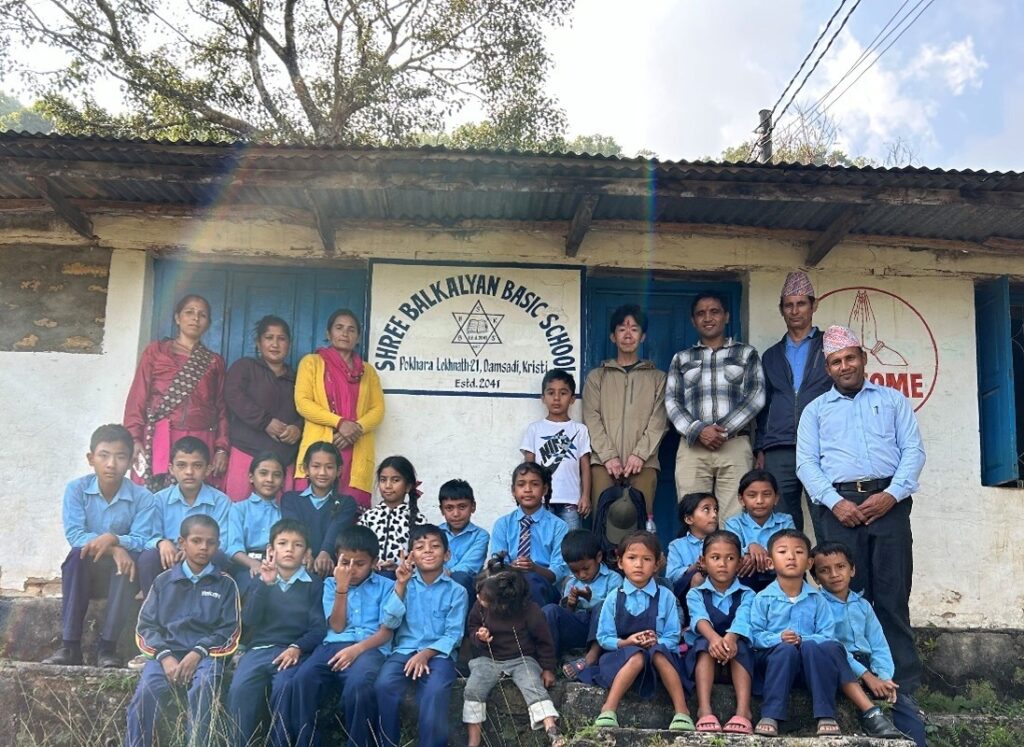
On our first visit, we visited seven schools in the Pokhara region. One school, in particular, stood out—not just for its beautiful mountain setting, but for the warmth of its students and teachers who welcomed us with open hearts.
The schools, made with traditional stone masonry, were fragile and unprotected. One had already suffered severe damage and could no longer be used.
We left that day not only with survey data, but with a deep sense of purpose.
Sharing Knowledge, Raising Awareness
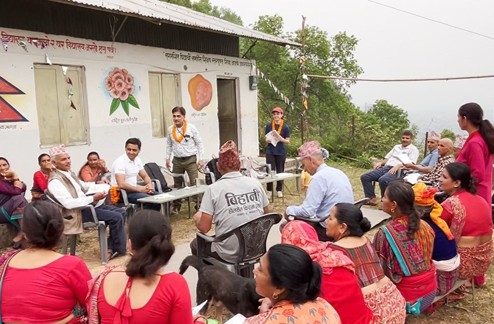
On our second visit, we returned to the same school to hold a small session on earthquake resilience, providing information about safer building practices to school staff and local residents.
Together with our local partners, we also conducted detailed measurements of one of the buildings to gather essential data for developing an effective reinforcement method.
Understanding Nepalese Traditional Buildings
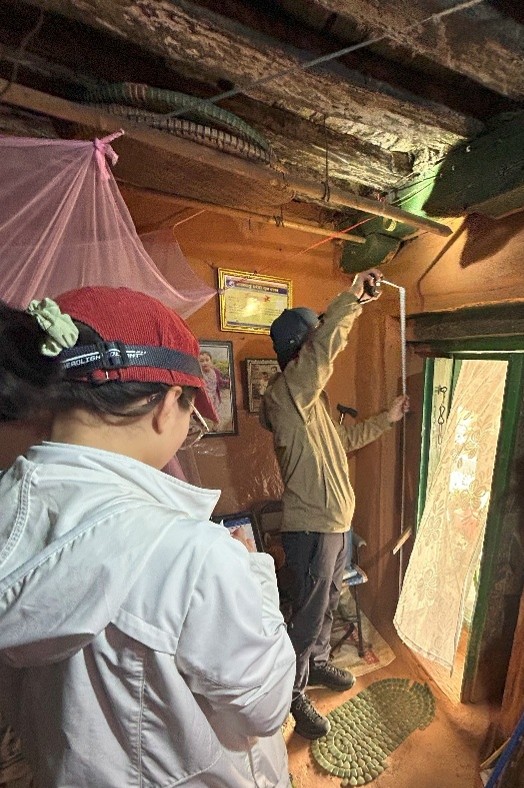
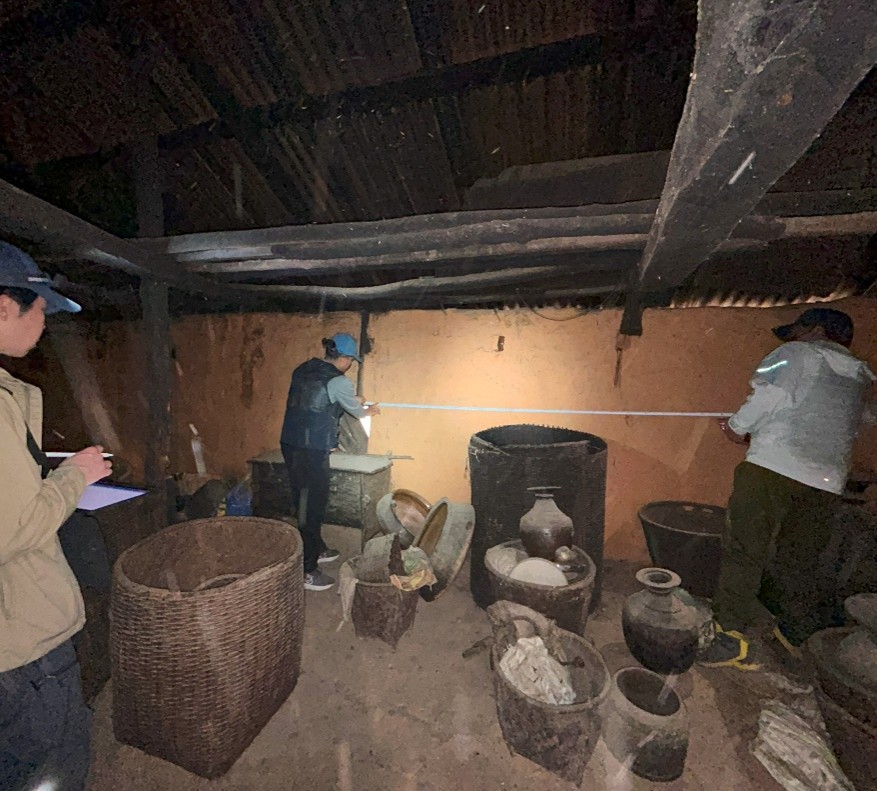
To deepen our knowledge of local building practices and earthquake impacts, we conducted detailed surveys of two homes: one actively used as a homestay and another abandoned due to severe damage.
These insights are essential for developing effective, low-cost reinforcement methods that not only protect schools but also support the wider community’s safety and resilience.
Structural Analysis
Based on actual measurements, we developed as-built drawings and created structural models using specialized analysis software.
The models incorporate actual earthquake response spectra to simulate realistic seismic conditions.
Through repeated simulations, we were able to reproduce the probable failure modes of the existing structures. These insights serve as the foundation for designing reinforcement methods that are not only structurally effective, but also practical and cost-efficient—tailored to the local context and construction techniques.


Partnering with Local Leaders
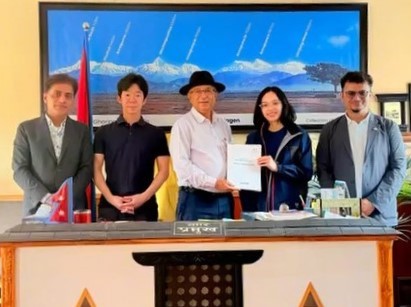
This was our second time meeting the Mayor of Pokhara, who kindly welcomed us again.
We shared our progress since the first visit and discussed how we could continue working together in the future.
We’ve also had the opportunity to meet with Nepal’s Minister of Education, members of parliament, and well-known architects. These exchanges are helping us build strong partnerships for lasting change.
Moving forward, we will continue working closely with our local partners to help create a safe and secure living environment for the people of Nepal—one where children can focus on their education without fear.
By completing a successful model case and sharing its value with the relevant authorities, we hope to spread this knowledge and approach more widely across the region. Ultimately, our vision is to support local people—including the next generation—in taking the lead in making their own homes and schools more resilient.
We would like to extend our heartfelt thanks to the Mayor of Pokhara, government officials, and members of parliament for welcoming us so warmly and supporting our efforts. We are especially grateful to our local partners, whose dedication and collaboration have been with us since the very beginning.
